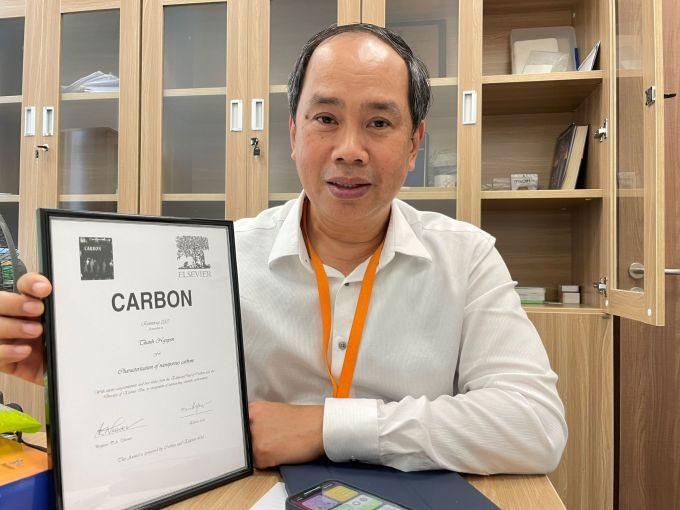Discovering the strong attraction of carbon surfaces to hydrogen, Dr. Nguyen Xuan Thanh and his team are seeking ways to store hydrogen using carbon materials with a porous structure.
This research was conducted over two years while Dr. Thanh worked at the University of Queensland (Australia), under the guidance of Professor Suresh K. Bhatia, the research group leader. Upon returning to Vietnam to work at the Mechanical Engineering Department of the Vietnam-Germany University, he continued his research and published his findings in Physical Review Letters, a prestigious journal in the field of physics.
According to Dr. Thanh, the biggest challenge with hydrogen is storing it, as it is a high-energy gas that is difficult to liquefy. Currently, hydrogen storage typically employs liquefaction methods down to temperatures of 20K, which is approximately -253 degrees Celsius, a very low temperature. Therefore, hydrogen storage devices need to use materials with high thermal insulation. As a result, the mass of the material containing hydrogen constitutes a significant portion, around 93% of the total mass, while only 7% is dedicated to hydrogen storage according to the standards set by the U.S. Department of Energy. “Storing hydrogen requires very specialized technology that exists in countries with advanced scientific and technical capabilities,” Dr. Thanh stated.

Dr. Nguyen Xuan Thanh with the carbon research award presented by Elsevier. (Photo: Ha An).
In fact, carbon can store charge in batteries, which has been widely applied. However, the porous carbon structure makes hydrogen storage easier than traditional methods, Dr. Thanh noted.
Following the research process, porous carbon is created from plant materials containing cellulose and lignin, such as timber, bamboo, water lilies, coconut fibers, and rice husks. These materials are carbonized in an anaerobic environment. The next step involves activating the carbon using physical methods by applying heat in an air or CO2 environment, or steam, and also through chemical methods using a strong acid or base. The thermal treatment process helps adjust the size, shape, and porous structure as desired, creating an optimal environment for hydrogen storage. The activated carbon structure must contain pores smaller than 1nm to generate a strong attraction to hydrogen gas, thus increasing its mass per unit volume and enhancing the storage capacity of the pores.
Dr. Thanh mentioned that these studies are still at the laboratory scale and focus only on hydrogen storage capabilities. In reality, the porosity of carbon is very complex and difficult to adjust due to the inherent imperfect structure of carbon. Controlling the structure of porous materials based on their properties to ensure optimal storage capacity requires further in-depth research. The technical solution is to effectively remove a large amount of heat released during the hydrogen charging process into the carbon to ensure the storage temperature (77K) is maintained, which must be considered in future application-oriented research.
Hydrogen is regarded as a green energy source because it uses water as waste and does not emit pollutants. However, hydrogen applications worldwide are not yet widespread, as the techniques for producing and storing this energy source are very challenging and costly. Therefore, Dr. Thanh believes that once the issues are resolved, the application of this research will be clear in developing new hydrogen storage methods using carbon, a readily available and low-cost material.



















































